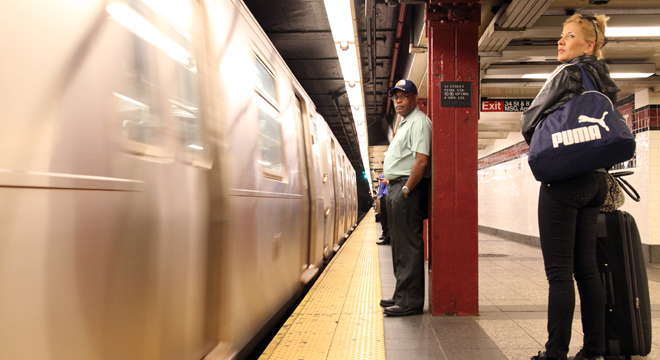The economy’s on the rebound, and with it so is the U.S. auto manufacturing sector, three years after Detroit nearly went bankrupt. But a different indicator of U.S. economic growth suggests a significant realignment is under way in the American transportation system — one that isn’t necessarily good news for car makers.
The charts below tell a key part of the American story of the last century. Despite their much smaller numbers, Americans in the middle of the 1900s took more public transit trips on buses, trains and so on than we do today as a whole. Many more. In 1947 — the peak year — they racked up 23.4 billion trips in total. Last year it was a paltry-by-comparison 10.4 billion.
The key reason why won’t surprise you.
“Back then people didn’t have cars,” said APTA spokesman Virginia Miller. “Even in the 1950s people didn’t own a lot of cars, owning one car was common. As we move into the ’60s we saw people moving out into the suburbs [facilitated by] the interstate legislation in 1956 under President Eisenhower.”
Public transportation’s been on the rebound for decades, after bottoming out in the early 1970s. But it didn’t really begin booming until the economy caught fire in the mid 1990s. Part of the story is population growth. Part of it’s the revival of American cities. But that recovery stalls every time the economy falls out from under it, which is exactly what happened in 2008. Last year, there was a significant turnaround. And that’s another indication that the economy is really, truly improving: Public transportation usage is back on the rise — in a significant way.
That may not seem like it follows. Why wouldn’t people use cheaper modes of public transportation during economic hard times? But, as the New York Times noted earlier this week, an overwhelming number of public transportation users are commuters, and when those commuters lose their jobs, there’s no reason to take the train or the bus to work.
APTA, of course, hopes it’s a return to trend. “What’s interesting now, in this new century, is that it appears we’re going back to the future as more and more people are realizing the value of public transportation,” Miller said. If she’s right, that has big implications for the robustness of the auto industry’s recovery, and many, many other aspects of the U.S. economy.








